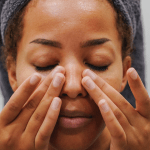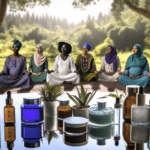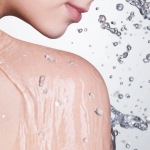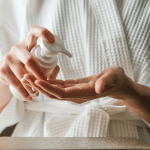The Role of Chemicals in Beauty Products
Chemicals are integral to the functionality and appeal of water-based skincare and beauty products. They serve a variety of purposes, from preserving the longevity of the product to enhancing its sensory attributes. Preservatives such as parabens and phenoxyethanol prevent the growth of bacteria and fungi, for which the water in the product is a breeding ground. Preservatives are an attempt to ensure safety and means to extend shelf life. Emollients like mineral oil and glycerin are used to soften and moisturize the skin, while surfactants enable products like shampoos and cleansers to lather and remove dirt and oil. Fragrances and colorants contribute to the sensory experience, making products more enjoyable to use.
The Scope of Chemical Use and Consumer Awareness
The use of chemicals in beauty products is widespread, with a diverse range of compounds being employed to achieve desired effects. Consumer awareness of these chemicals varies, with a growing segment of the population becoming more conscious of ingredients and their potential impacts on health. Studies have shown that certain chemicals can have acute effects, such as skin irritation or allergic reactions, while others may have chronic impacts, including endocrine disruption or carcinogenicity. The ‘cocktail effect’, where multiple chemicals in skincare and beauty products may interact to produce unforeseen effects, is also a concern for consumer safety.
Objective of this Article about Chemicals in Skincare
The objective of this article is to provide a comprehensive overview of the chemicals commonly found in skincare and beauty products, their potential risks, and the regulatory landscape that governs their use. We aim to classify these chemicals in skincare products based on their functions and potential health impacts, discuss the importance of transparency and ingredient disclosure, and empower consumers with knowledge to make informed choices. Through this exploration, we will also examine the role of consumer advocacy and education in driving industry change towards safer and more sustainable beauty practices.
Chemical Prevalence and Potential Risks
Common Chemicals in Personal Care Products
The beauty and personal care industry is replete with products that promise to cleanse, rejuvenate, and beautify. However, many of these products contain a cocktail of chemicals that can pose potential risks to our health. Among the most common chemicals found in personal care items are parabens, used as preservatives to prevent the growth of bacteria and mold; phthalates, which are used to make fragrances last longer; and sulfates, which create the lather in shampoos and soaps. Other prevalent chemicals include formaldehyde, triclosan, and various petrochemicals.

Doubting chemicals in skincare and femcare? Well done! Choose chemical-free products whenever possible.
Acute and Chronic Health Impacts
Exposure to chemicals in beauty products can lead to both acute and chronic health issues. Acute reactions may include skin irritation, allergic reactions, and contact dermatitis. Chronic exposure, on the other hand, can have more insidious effects. For instance, endocrine disruptors like parabens and phthalates may interfere with hormone function and have been linked to reproductive issues and certain types of cancer. Long-term use of products with harmful chemicals can also contribute to chronic respiratory problems, particularly in salon workers exposed to high levels of airborne substances.
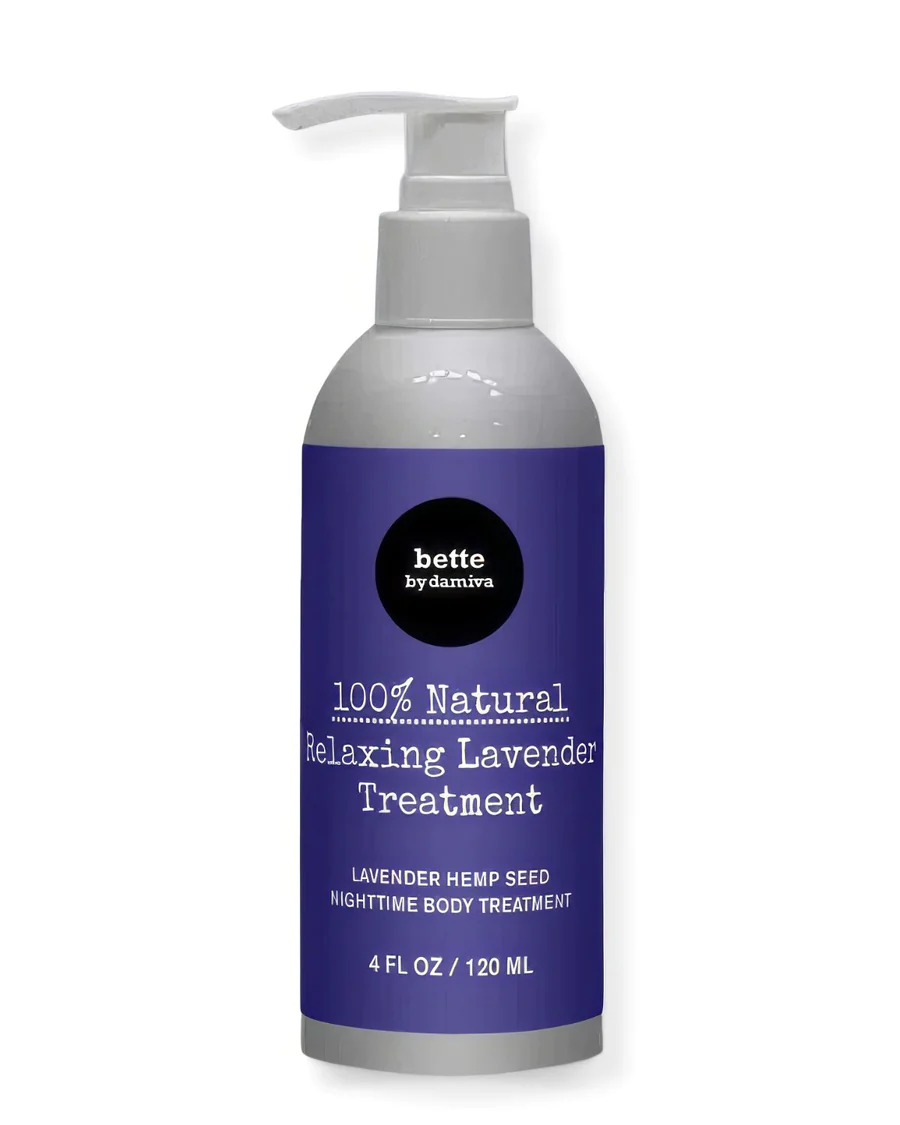
Bette 100% All-Natural Relaxing Lavender Body Lotion.
Chemical-Free
Your relaxing night time body moisturizer to leave the day’s stress behind. Decompress and wish your body good night with the calming scent of lavender.
The ‘Cocktail Effect’ of Combined Chemicals in Skincare
One of the most concerning aspects of chemical exposure through beauty products is the ‘cocktail effect’. This term refers to the potential for chemicals in skincare to interact synergistically, where the combined effect is greater than the sum of their individual effects. This interaction can amplify the toxicity of these chemicals, leading to unforeseen health risks. The lack of comprehensive testing for the combined effects of these chemicals in skincare and beauty products means that consumers are often unaware of the potential dangers lurking in their daily beauty routines.
For instance, the preservative “sodium benzoate” is widely used in skincare and cosmetics, and so is ascorbic acid (vitamin C). However, together, this combination can form benzene, which is a known carcinogen.
As consumers become more aware of the potential risks associated with the chemicals in their skincare and beauty products, the demand for safer, non-toxic alternatives is growing. It is crucial for regulatory bodies to step up and ensure that the beauty industry adopts more transparent practices and safer formulations to protect public health.
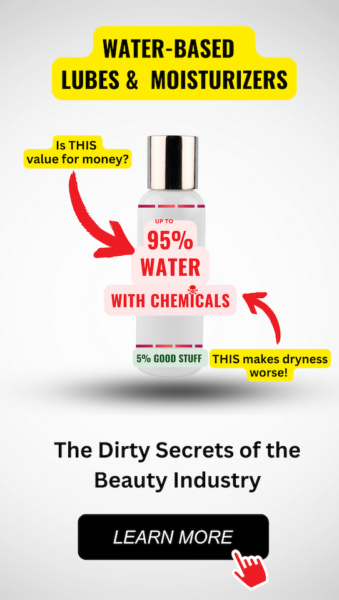
Feeling You Have a Right to Safe Beauty & Fem Care?
If so, it may be time for a change. It starts with knowledge. We have a few suggestions in our new guides.
Regulatory Perspectives and Consumer Protection
Comparing FDA and EU Cosmetic Regulations
The regulatory landscape for cosmetics and personal care products varies significantly between the United States and the European Union. In the U.S., the Food and Drug Administration (FDA) operates under the Food, Drug, and Cosmetic Act of 1938, which until recently had not seen substantial updates in its approach to cosmetics regulation. The EU, on the other hand, has a more stringent regulatory framework, having banned over 2,400 chemicals in skincare and beauty products compared to the FDA’s ban on only 11 substances. The EU’s approach is more precautionary, requiring a comprehensive safety assessment before a product can be marketed, while the FDA has traditionally allowed cosmetics to be sold without pre-market approval, relying on post-market surveillance to monitor adverse effects.
The Impact of Regulatory Discrepancies on Safety
The differences in regulatory standards between the FDA and the EU have significant implications for consumer safety. The EU’s proactive stance means that potentially harmful substances are less likely to be found in products, whereas the FDA’s historical lack of authority to require pre-market testing or to mandate recalls means that American consumers may be at greater risk of exposure to hazardous chemicals. This discrepancy can lead to a situation where products deemed unsafe in the EU can still be available in the U.S. market. Additionally, the lack of harmonization in regulations can create challenges for global companies who must navigate these differing standards.
Recent Regulatory Updates and Their Implications
The Modernization of Cosmetics Regulation Act (MoCRA) of 2022 represents the most significant update to U.S. cosmetics regulation since the 1938 Act. MoCRA enhances the FDA’s authority, allowing for mandatory recalls of harmful products and requiring manufacturers to disclose fragrance and flavor ingredients. However, critics argue that MoCRA does not go far enough, as it still does not require independent safety testing before products reach consumers, nor does it address the use of “forever chemicals” or the marketing of products as “clean” or “safe” without standardized definitions. The new law also does not significantly expand the list of banned substances, leaving the U.S. far behind the EU in terms of prohibited chemicals. While MoCRA is a step forward, there is a clear need for further legislative action to ensure consumer safety and align U.S. regulations more closely with international standards.
Chemical Classifications and Their Significance
Identifying Allergens and Carcinogens
Understanding the chemical components in skincare and beauty products is crucial for consumer safety. Among these components, allergens and carcinogens are of particular concern. Allergens are substances that can trigger allergic reactions, which range from mild irritations to severe anaphylactic responses. Common allergens in beauty products include certain fragrances, preservatives like parabens, and even some natural ingredients such as essential oils.
Carcinogens, on the other hand, are chemicals that are known or suspected to cause cancer. Examples include formaldehyde-releasing preservatives and certain petroleum-based ingredients. It is essential for consumers to be aware of these classifications to make informed choices and avoid potential health risks.
Understanding Endocrine Disruptors
Another significant group of chemicals to be aware of are endocrine disruptors. These are substances that can interfere with the endocrine system, which regulates hormones in the body. Endocrine disruptors can mimic, block, or alter hormone levels, leading to a variety of health issues such as reproductive problems, developmental delays, and increased cancer risk. Common endocrine disruptors found in beauty products include phthalates, often used as plasticizers in nail polishes and fragrances, and triclosan, an antimicrobial agent.

Common chemicals can hurt your gut health, your skin health, your mental health, and immune system.
Do you know the three main ways that your body gets in touch with harmful chemicals?
Knowledge is Power!
The Ultimate Detox Guide will tell you how to lower your exposure to harmful chemicals!
The Importance of Chemical Classifications for Consumers
The classification of chemicals in beauty products serves as a guide for consumers to understand the potential impacts on their health. By being informed about the presence of allergens, carcinogens, and endocrine disruptors, consumers can make choices that align with their health concerns and ethical values. Moreover, awareness can drive demand for safer products, encouraging the industry to innovate and regulate the use of harmful chemicals more strictly.
Transparency in labeling and the availability of resources to educate consumers about these classifications are vital. There are organizations such as the Environmental Working Group (EWG) provide databases that rate the safety of cosmetic ingredients. The problem with this is that
- the rating is still subject to subjectivity
- there can be conflict of interest, for instance when companies can or need to pay to get into the database.
- the cocktail effect is not considered as it would be needed
Transparency and Ingredient Disclosure in the Beauty Industry
Current State of Ingredient Disclosure
The beauty industry has long been scrutinized for its use of complex chemicals and the opacity surrounding their disclosure. Under the Fair Packaging and Labeling Act (FPLA), companies are required to list ingredients, but this has not always translated into clarity for consumers. The term “fragrance,” for example, can mask a multitude of undisclosed chemicals, raising concerns about potential health risks. Despite recent efforts to enhance transparency, such as the Personal Care Products Council’s (PCPC) Consumer Commitment Code and the International Fragrance Association’s (IFRA) Transparency List, gaps in disclosure remain. Consumers often find themselves navigating a labyrinth of vague terms and undisclosed components, highlighting the need for more comprehensive transparency in the industry.
The Case for Full Transparency
Advocates argue that full transparency is not just a consumer right but a public health imperative. The presence of unlabeled chemicals linked to health concerns such as cancer and endocrine disruption underscores the urgency for complete disclosure. The Cosmetic Supply Chain Transparency Act of 2023 represents a significant step forward, mandating upstream suppliers to provide detailed information, including toxicity data and contaminant testing results. This push for transparency is not only about safeguarding health but also about empowering consumers to make informed choices that align with their values and safety concerns.
“Clean” and “Natural”? Challenges to Achieving Comprehensive Disclosure
Despite the clear benefits of full transparency, several challenges impede its realization. Intellectual property rights, for instance, often clash with the call for ingredient openness, particularly in the realm of fragrances. Additionally, the complexity of the supply chain presents hurdles in tracking and disclosing every chemical used in product formulations. Regulatory discrepancies, such as the stark contrast between the number of banned substances in the EU versus the US, further complicate the landscape. Moreover, the beauty industry’s reliance on marketing terms like “clean” and “natural,” which lack clear regulatory definitions, can mislead consumers seeking safe and non-toxic products. These challenges highlight the need for ongoing advocacy, research, and legislative action to ensure that transparency in the beauty industry becomes a standardized and enforceable practice.
Evaluating and Ensuring Chemical Safety
The Role of Dose in Determining Safety for Chemicals in Skincare
The adage “the dose makes the poison” does not necessarily hold true in the realm of skincare and beauty products. Generally, safety of chemicals in these topical products is not solely determined by their presence but by the concentration at which they are used. Dose-response assessment is a fundamental principle in toxicology that helps establish the relationship between the amount of a substance and the extent of the toxic effect. The problem is that this may not hold for hormone disruptors and does not account for the accumulative effect of chemicals from using several products.
In the current practice, for instance, certain preservatives are deemed safe at low levels but thought to pose health risks at higher concentrations. Regulatory agencies try to use permissible exposure limits to ensure that the use of these chemicals does not exceed levels that could cause harm to consumers. But what if a person uses several products each day that are within limits individually but not together? And what about the exposure limits of the combined effects of chemicals, like sodium benzoate and vitamin C? Which can form benzene, a carcinogen.
Gaps in Long-term Safety Testing of Chemicals in Skincare
While acute toxicity can be relatively straightforward to assess, chronic health impacts pose a greater challenge. Long-term safety testing is often limited by practical constraints such as time, cost, and ethical considerations. This leads to gaps in our understanding of how prolonged exposure to low doses of chemicals in beauty products may affect health over time.
Endocrine disruptors, for example, may not cause immediate visible effects but can potentially lead to serious health issues after long-term exposure. The lack of comprehensive long-term studies means that the cumulative effects of daily, repeated use of beauty products are not fully understood, potentially leaving consumers at risk.
Case Studies of Chemicals in Skincare & Beauty Products and the Importance of Ongoing Research
Case studies have played a crucial role in identifying potential risks associated with chemicals in beauty products. For instance, the discovery of phthalates as endocrine disruptors came from observational studies linking their presence in personal care products to adverse reproductive outcomes.
Ongoing research is vital to fill the knowledge gaps in chemical safety, or rather the lack thereof. It involves not only laboratory studies and clinical trials but also post-market surveillance to monitor adverse effects reported by consumers. This continuous research cycle helps in updating safety standards and regulatory guidelines to protect consumer health.
But what then really happens, can be best described in the words of Philippa Darbre, professor emeritus in the School of Biological Sciences at the University of Reading in Great Britain.
“What often happens now is that one chemical with ‘bad press’ is replaced by a new chemical with less data.”
Philippa Darbre, professor emeritus in the School of Biological Sciences at the University of Reading in Great Britain. Darbre led the study that raised the concern about parabens and breast cancer (2004).
In conclusion, ensuring the safety of chemicals in skincare and beauty products is a complex task that would require a multifaceted approach. It involves understanding the role of dosage, acknowledging the limitations of current testing methodologies, and committing to ongoing research to adapt to new findings, looking at compound and cocktail effect, and reversal of “not guilty until proven innocent” for chemicals.
For consumers, it is a safer choice to avoid chemicals as much as possible. In the world of skin care, it means choosing products that are chemical free, which means water-free. As mentioned initially, the chemicals in creams and lotions are only used because the water-base is a breeding ground for bacteria. Without water, there is no need to put chemicals in.
This knowledge can help us make safer choices in the beauty products we use daily.
Empowering Consumers: Education, Advocacy, and Safer Choices
Navigating Product Labels and Identifying Toxic Ingredients
Understanding the chemicals in skincare and beauty products is crucial for making informed decisions. Consumers should be aware of certain toxic ingredients that may pose health risks. These include parabens, phthalates, formaldehyde, and synthetic fragrances, among others. To navigate product labels effectively, consumers can:
- Download a dirty ingredient guide here
- Look for certifications like “organic” or “natural,” but also understand that these terms are not always regulated. And understand these products still need chemicals if they are made with water
- Use resources check product safety ratings – but be aware how these databases are funded and if they charge companies for listings. And remember ratings are subjective. There can be conflict of interest.
- Stay away from “fragrance,” which can hide a multitude of chemicals.
- Seek out products that list all their ingredients transparently. The fewer the better
- Do not buy any skin care that lists “aqua”, “water”, “h2o” or “juice” because these products need chemicals to prevent microbial overgrowth. This would generally be at the top of the label.
Leveraging Technology for Safer Product Selection
Technology can be a powerful ally in selecting safer beauty products. Share the information about chemicals in water-based skin care and beauty products with friends or on social media. There are also apps and websites that scan product barcodes and provide instant safety assessments.
Consumer Advocacy and Its Role in Industry Change
Consumer advocacy plays a pivotal role in pushing for industry change. Consumers can join a larger movement that lobbies for stricter regulations and transparency in the beauty industry. Advocacy efforts have led to legislative proposals such as the Safer Beauty Bill Package, which aims to ban toxic chemicals and improve ingredient transparency. Consumers can participate in advocacy by:
- Signing petitions that call for regulatory reforms.
- Supporting companies that prioritize safety and transparency.
- Engaging in community education to spread awareness about toxic ingredients.
Adopting a Cleaner Beauty Regimen for Health
Adopting a cleaner beauty regimen not only benefits personal health but also the environment. Consumers can make a difference by:
- Choosing products with biodegradable ingredients to reduce environmental impact
- Choosing products that are chemical free
- Choosing products that are water free
- Reducing consumption by using multi-purpose products and buying less.
By educating themselves, leveraging technology, engaging in advocacy, and making conscious choices, consumers can drive the beauty industry towards a safer and more sustainable future.
Damiva is the leading brand for 100% chemical-free skin care and fem care products. Every woman deserves products that are safe and free from hormone disruptors and harmful chemicals. It’s not just about looking good; it’s about genuine health, authentic beauty, and unbridled joy.
Damiva helps women choose safe, longterm healthy, 100% all-natural, chemical-free skin & fem care to live healthier, look better and feel better.

We think:
The best Relaxing Body Lotion – Chemical Free, with Lavender Scent!
*****
“It’s part of my bedtime routine. Helps me relax and fall asleep.” Alexis T.



